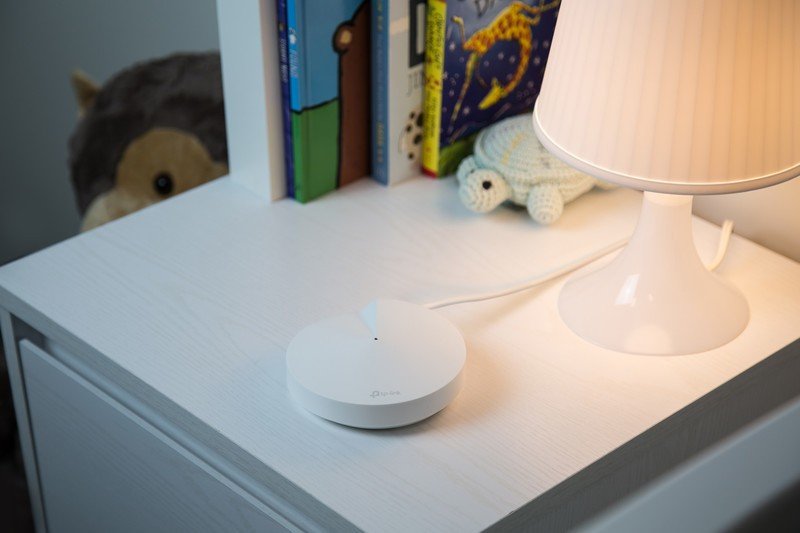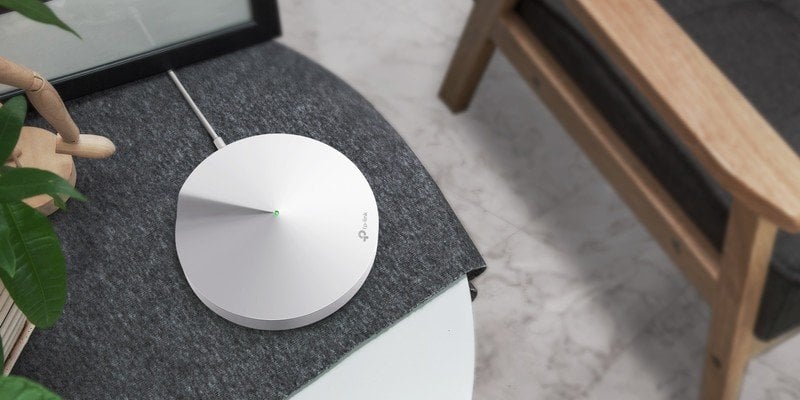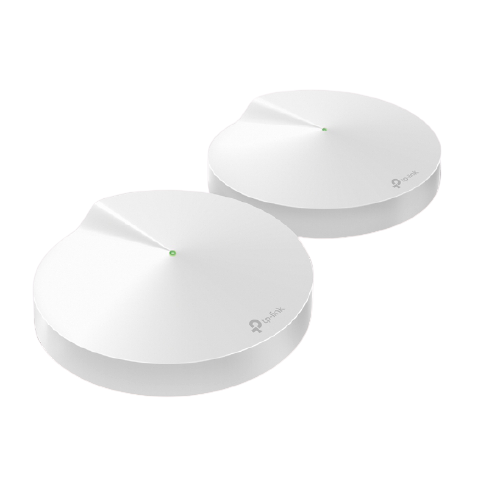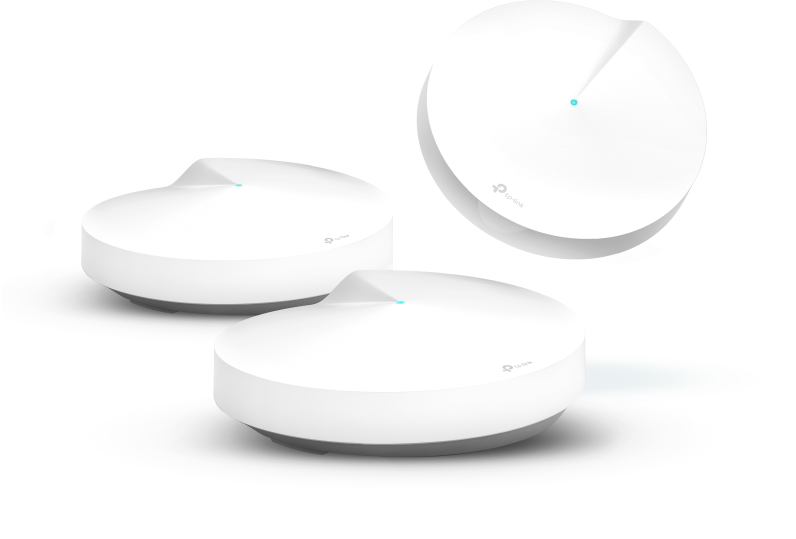Punching well above its weight in performance, the TP-Link Deco M5 surprises with its snappy AC1300 Wi-Fi speeds and mesh capabilities. The small package and expandability with other Deco products make it a great starter for your mesh network. The Deco M5 is also a great choice to expand an existing Deco mesh.
Although it sits a bit taller and less than half an inch wider than the Deco M5, the TP-Link Deco M9 Plus looks nearly identical to its smaller sibling. They pack similar capabilities as well, though, the Deco M9 Plus has several technical advantages. It has an extra 5GHz Wi-Fi band allowing a higher top speed and a better quality backhaul. It also has a built-in Zigbee hub to control compatible smart home equipment. With networks needing more speed all the time, the Deco M9 Plus offers a better overall package for a future-proof mesh network.
TP-Link Deco M9 Plus vs. Deco M5 Coverage and speed
The Deco M5 brings all the essentials in a small package, with a very competitive price for its feature set. The Deco M9 Plus takes the lead when it comes to its larger coverage area at 2,500 square feet per unit compared to the 2,000 square feet covered by the Deco M5. Keep in mind that there will be some overlap necessary when building your mesh. Of course, every house will be different depending on building materials and layout and it’s worth considering if you will even benefit from moving to a mesh setup. With either set, a weak spot in the house can be covered by the addition of any of the Wi-Fi 5 Deco routers, so a Deco M5 could be added to a Deco M9 Plus setup for a little more coverage.
| Deco M9 Plus | Deco M5 | |
|---|---|---|
| Wi-Fi speed | AC2200 (400Mbps + 867Mbps + 867Mbps) | AC1300 (400Mbps + 867Mbps) |
| Wi-Fi connectivity | Tri-band Wi-Fi 5 | Dual-band Wi-Fi 5 |
| Antennas | 8 | 4 |
| MU-MIMO | yes | yes |
| Ethernet ports | 2 | 2 |
| Dimensions | 5.7 in. x 1.8 in. | 4.7 in. x 1.5 in. |
| Coverage (1 units) | up to 2,500 sq. ft. | up to 2,000 sq. ft. |
The Deco M5 pushes reasonably fast AC1300 Wi-Fi speed, which will work for most standard usage. These speeds break down to 400Mbps on the 2.4GHz band and 867Mbps on the 5GHz band. The Deco M9 Plus adds another 5GHz band to the equation bringing up its total capacity to AC2200.
Keep in mind that a device can only connect to one of these bands at a time so neither is delivering full gigabit speeds to a single device. Mainly, the extra band on the M9 Plus allows the mesh points to operate at full speed without needing to connect to the device and base router on the same band simultaneously essentially doubling performance compared to the M5.
When it comes to download speed, the Deco M5 will be enough for most people and will only fall behind on large downloads that can saturate a network over 500Mbps. It is possible to use the two models together if one area needs a stronger connection than another.
TP-Link Deco M9 Plus vs. Deco M5 Build your mesh
A nice feature of the TP-Links Deco line is that all of these routers are compatible, making it easy to build a mesh with plenty of speed where you need it without wasting money on lower priority areas in your home. You can even add something like the Deco P9 to the garage or a basement that might have a weak wireless signal to the rest of the mesh thanks to being able to use your home’s power lines as a backhaul. This can all be accomplished with an app on Android or iOS devices. This app can customize all of the router’s settings and help place additional mesh points in the most efficient area.
The speed difference between these devices mainly comes down to the third 5 GHz band that’s available on the Deco M9 Plus. This additional band can be used to strengthen the connection between the mesh network points without giving up too much speed. A mesh network works by having the ability to intelligently direct data to the mesh point that’s closest to your device. The speed provided by a third band helps a connection stay fast when connected to a remote mesh point.
TP-Link Deco M9 Plus vs. Deco M5 The details make a difference
The built-in Zigbee smart hub contributes to the larger size of the TP-Link Deco M9 Plus compared to the Deco M5. If you don’t have a compatible smart home hub already, this can save even more space and reduce the complexity of your home network. This feature is not that useful for someone that has yet to hop on the smart home trend but in the future, this support can be convenient.
Speaking of convenience, both of these routers are small enough that they can be tucked out of sight without compromising on the positioning. The matte white weather radar design on the top of the device does stand out a bit but should blend in well enough in any room of the house.
The point of a mesh network is to allow expansion and create greater convenience. With its tri-band connection, the TP-Link Deco M9 Plus makes a superior wireless mesh with a better connection speed to the mesh points from the primary router. In every category except pricing, the Deco M9 Plus is the stronger product and an easy recommendation. While many of the best wireless rotuers can offer greater speeds than either Deco, they’re still a solid value. If you already have part of a Deco mesh network and are looking to expand it where overall speed is not as important, the Deco M5 is still a very strong mesh router.
Big on speed
TP-Link Deco M9 Plus
No speed compromise
The TP-Link Deco M9 Plus offers great tri-band connectivity and AC2200 speeds in a small housing with a ton of expansion options.
Big on value
TP-Link Deco M5
Great features at a mid-range price
The TP-Link Deco M5 has more than enough speed for most people and is a great value covering most homes with three units and easy expansion.





